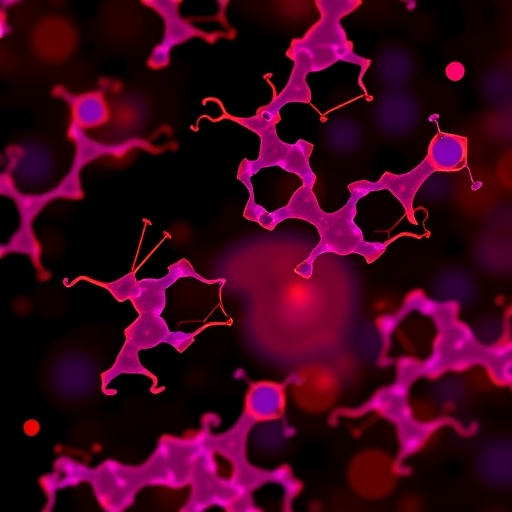A new study provides the first direct evidence of how a genotoxic warhead that can target and destroy the DNA of nearby cells renders its carcinogenic effects. The results identify a potential biomarker for assessing colorectal cancer risk. Among the many microbes that inhabit our gut, some strains of Escherichia coli (E. coli) produce colibactin. Colibactin is thought to be a product of E. coli strains containing a biosynthetic gene cluster known as the pks island. Exposure to the genotoxin colibactin has been shown to cause severe genetic damage in mammalian cells by breaking strands of DNA apart, inducing increased rates of gene mutation and tumor growth. Furthermore, previous research has demonstrated that pks+ E. coli is found with greater frequency in patients with colorectal conditions, including colorectal cancer. However, despite its links to human cancer, the chemical nature of the genotoxin, its pro-carcinogenic role or how it gets into the cells it destroys has remained elusive for over a decade, according to the authors. Due to its instability and low concentration, isolating the genotoxin has remained a challenge. Most attempts have been limited to identifying the stable precursors of colibactin and using synthetic “colibactin mimics” in vitro. Here, Matthew Wilson and colleagues combine chemical synthesis with a newly developed untargeted mass-spectrometry-based approach – LC-MS3 DNA adductomics – and identified two chemical products left over after colibactin-mediated DNA damage in living human cells. According to Wilson et al., the newly discovered colibactin adducts provided the first direct evidence that alkylation via a cyclopropane “warhead” underlies the genotoxin’s DNA destruction. Furthermore, the data suggest that the adducts are biomarkers for pks+ E. coli exposure and could inform colorectal cancer prognosis. In a related Perspective, Rachel M. Bleich and Janelle C. Arthur write; “this [study] represents a significant mechanistic advance in understanding the chemical nature of colibactin and its carcinogenic activities.”
###
Media Contact
Press Package Team
[email protected]
202-326-6440
http://dx.




